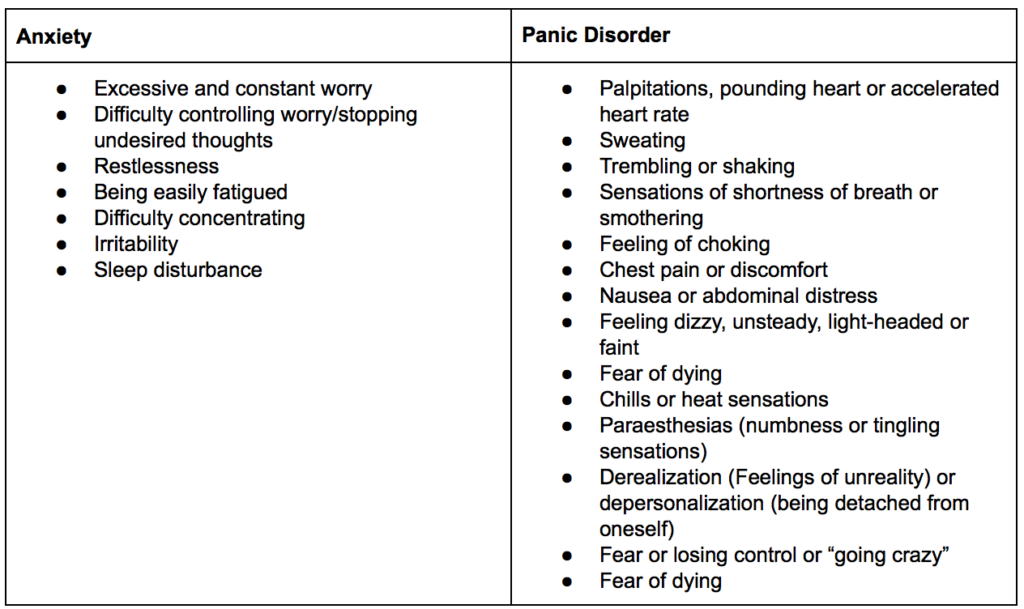You’ve probably heard both of these terms, anxiety and panic disorder, thrown around interchangeably. It can be confusing because a panic disorder is technically classified as a type of anxiety disorder. Although the symptoms of these two disorders may overlap occasionally, they are in fact two very different conditions.
Let’s break it down and look at the symptoms of each (according to the DSM-5):

For anxiety, at least three symptoms listed are necessary and must last over the span of six months, with more days full of symptoms than not. Anxiety disorders are often characterized by constant, uncontrollable feelings of worry, fear, nervousness, tension and uneasiness. On the other hand, panic disorder is defined by the DSM-5 as “a period of intense fear in which symptoms develop abruptly and peak rapidly less than 20 minutes from symptom onset.” During this time, at least four of the listed symptoms occur. Some of these defined symptoms are numbness, dizziness, nausea, hot flashes, chills, shortness of breath, rapid heart rate, fear of loss of control, feeling detachment from reality, and chest pain. Furthermore, those who suffer from panic disorders live with persistent concern or fear about additional panic attacks occurring.
In other words, panic attacks are when someone experiences sudden, random unforeseen panic attacks . When these panic attacks are recurrent, they get classified as a panic disorder. Panic attacks are intense and creep up spontaneously, without any triggers, so someone suffering from panic disorder also lives in constant fear of another attack arising at any given moment. On the other hand, anxiety usually has a trigger, which can range anywhere from conflicts to health issues. Rather than showing up unexpectedly and then disappearing until the next occurrence, anxiety tends to build up gradually and stay. If we were to look at it in terms of relationships, panic disorder is an unwanted guest who stops by here and there, while anxiety is your roommate’s boyfriend who overstays his welcome.